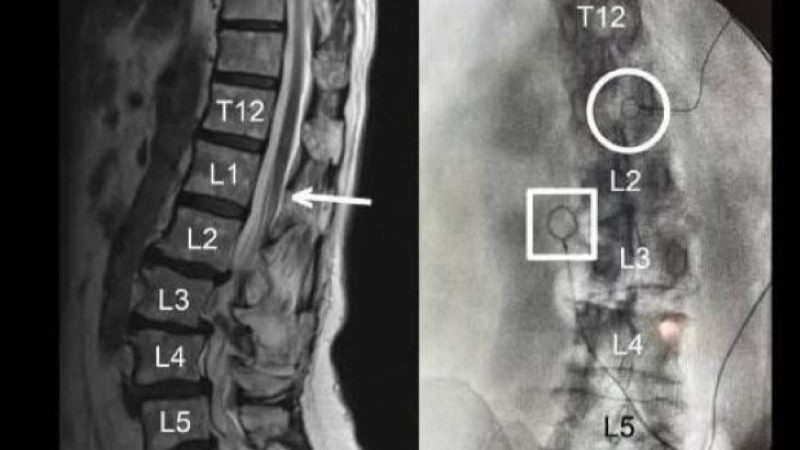
Adults with lower extremity joint symptoms may ward off their risk of disability with just an hour a week of exercise, according to recent findings.
“Disability is costly to society and to the individual. Older adults who lose independence in mobility or in ability to perform the necessary activities of daily living (ADLs) are less likely to remain in the community and are at elevated risk of death,” wrote the researchers, whose work was published in the American Journal of Preventative Medicine. “A leading cause of disability is knee and hip joint conditions, which is globally ranked as the 11th highest contributor to disability.”
The researchers sought to find a threshold for how much activity would be required to reduce the risk of disability and concluded that “approximately 1-hour moderate–vigorous activity/week significantly increased the likelihood of maintaining disability-free status over [four years].”
Older adults who log a minimum of one hour a week of physical activity, roughly 10 minutes a day, can prevent getting a disability, said a study published Monday. https://t.co/QgVZ0K5V4V
— Dr. Gary Ferguson (@NaturewayAlaska) April 1, 2019
“This is less than 10 minutes a day for people to maintain their independence. It’s very doable,” said lead author Dorothy Dunlop, PhD, professor of preventive medicine at Northwestern University Feinberg School of Medicine, in a press release. “This minimum threshold may motivate inactive older adults to begin their path toward a physically active lifestyle with the wide range of health benefits promoted by physical activity.”
"A study from researchers at Northwestern Medicine found that less than 10 minutes a day of moderate physical activity was enough to help older adults avoid limitations to their movement." #olderadults #aging https://t.co/oMu7tvFp5F
— HIGN at NYU Meyers (@HIGN_NYU) April 2, 2019
An Hour A Week Keeps Disability Away
For the study, researchers used multisite Osteoarthritis Initiative accelerometer monitoring cohort data spanning September 2008 through December 2014. A total of 1,564 patients aged ≥ 49 years (range 49–83 years at baseline) with lower extremity joint symptoms were included. The cohort was 56% female, and 38% of patients were obese (body mass index [BMI] ≥ 30 kg/m2). Knee symptoms were the most prevalent lower extremity symptoms, impacting 93% of the cohort—62% of who had radiographic disease); patients also had hip (61%), foot (12%), and ankle (11%) symptoms. More than half (54%) of patients had concomitant hip and knee symptoms.
One hour of moderate activity a week or 10 minutes a day could help #older adults remain independent, according to a new study. https://t.co/sR6GV3jd5z #exercise #walking
— CenterLTC (@CenterLTC) April 1, 2019
Patients were evaluated biennially for disability-free status from gait speed ≥ 1 m/second (mobility disability–free) and self-report of no limitations in ADLs (ADLs disability–free).
The analysis found that a minimum of 56 and 55 minutes a week of moderate–vigorous activity was associated with four–year disability–free status from mobility and ADLs disabilities, respectively, with results remaining consistent regardless of sex, BMI, age, and knee osteoarthritis status. Patients above the minimum threshold, compared to those below, had significantly lower mobility disability (3% vs 24%, RR=0.14, 95% CI=0.09, 0.20) and ADLs disability (12% vs 23%, RR=0.55, 95% CI=0.44, 0.70) rates.
The Department of Health and Human Services’ physical activity guidelines state that adults—regardless of age or chronic disease/disability status—should aim to achieve at least 2.5 to five hours of moderate-intensity, 1.25 to 2.5 hours of vigorous-intensity, or “an equivalent combination” of moderate- and vigorous-intensity aerobic exercise, if possible. Exceeding the recommended times is advantageous. In addition, adults should participate in moderately intense or greater muscle-strengthening activities at least twice a week.
The one hour a week that proved beneficial in this study could be a great starting point for adults who currently do not exercise, according to Dr. Dunlop.
“We hope this new public health finding will motivate an intermediate physical activity goal,” she said. “One hour a week is a stepping stone for people who are currently inactive. People can start to work toward that.”
Just 10 minutes of daily exercise could be enough to prevent arthritis, the condition leading to a disability https://t.co/WhVtfuuZaQ
— ukactive (@_ukactive) April 2, 2019







 © 2025 Mashup Media, LLC, a Formedics Property. All Rights Reserved.
© 2025 Mashup Media, LLC, a Formedics Property. All Rights Reserved.